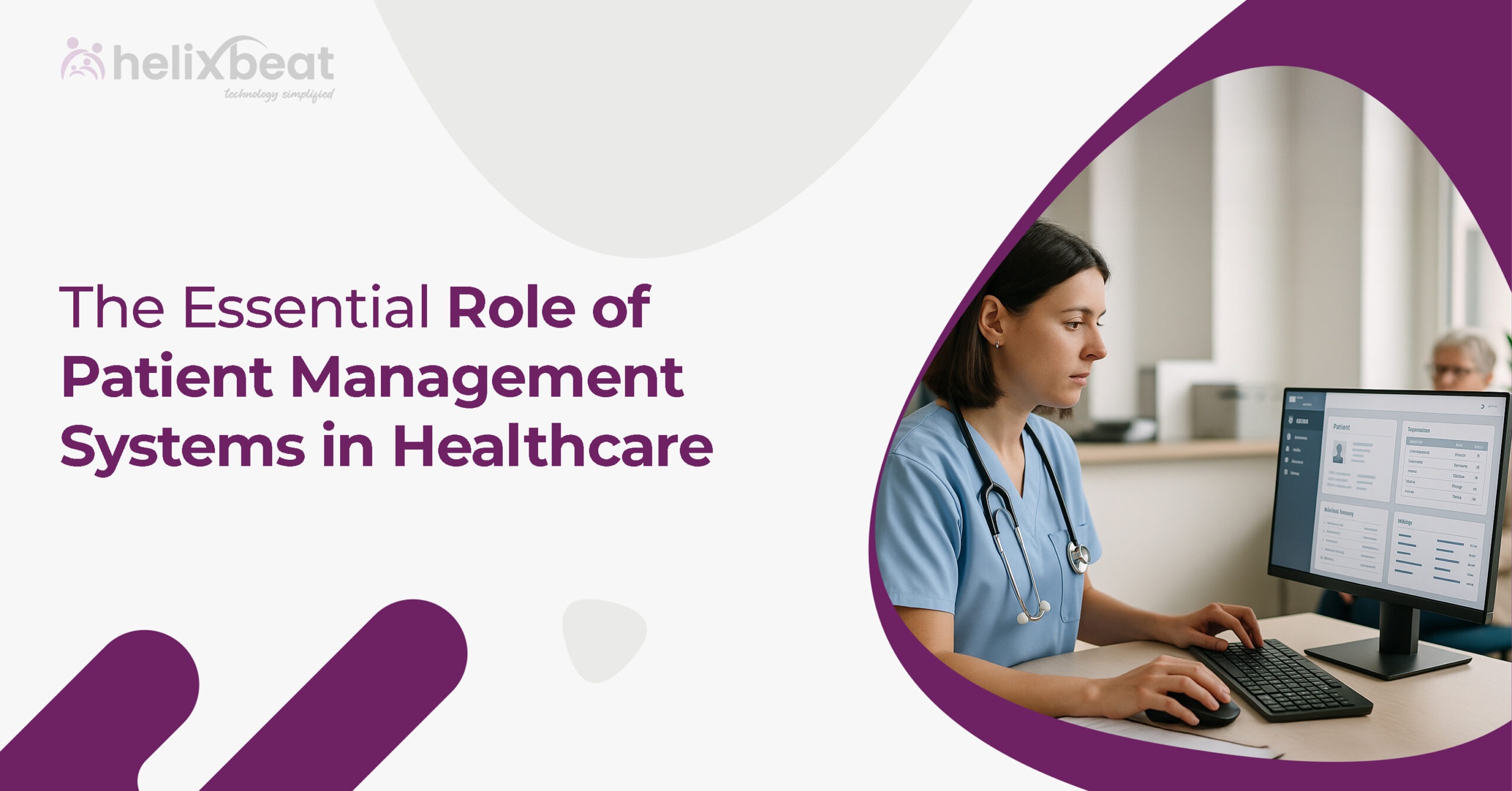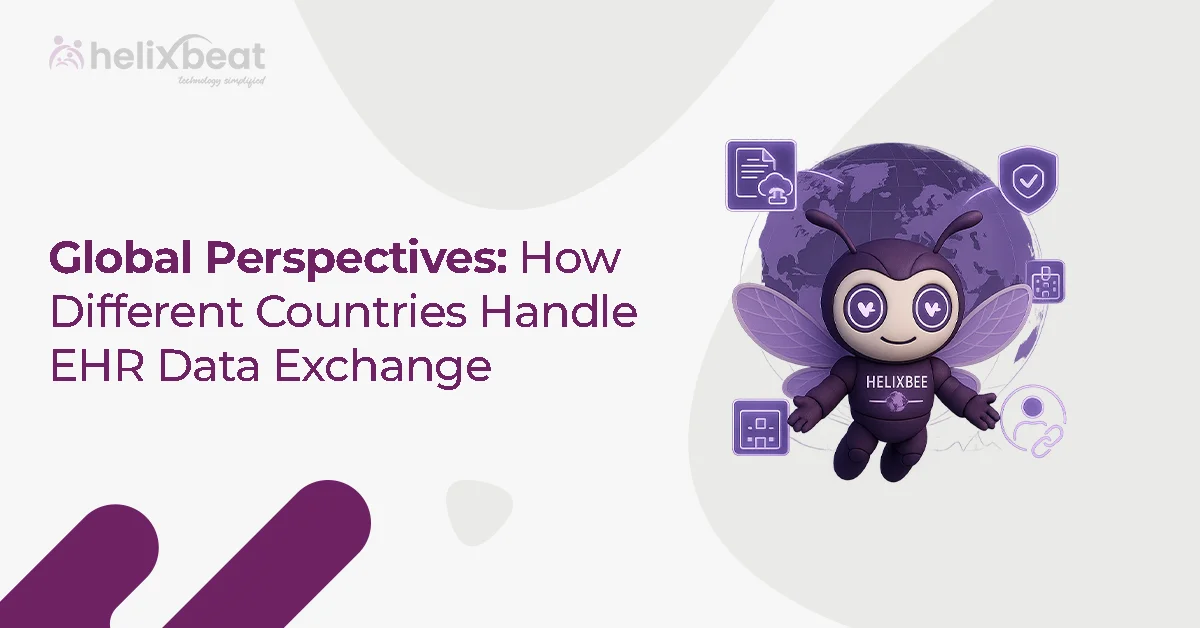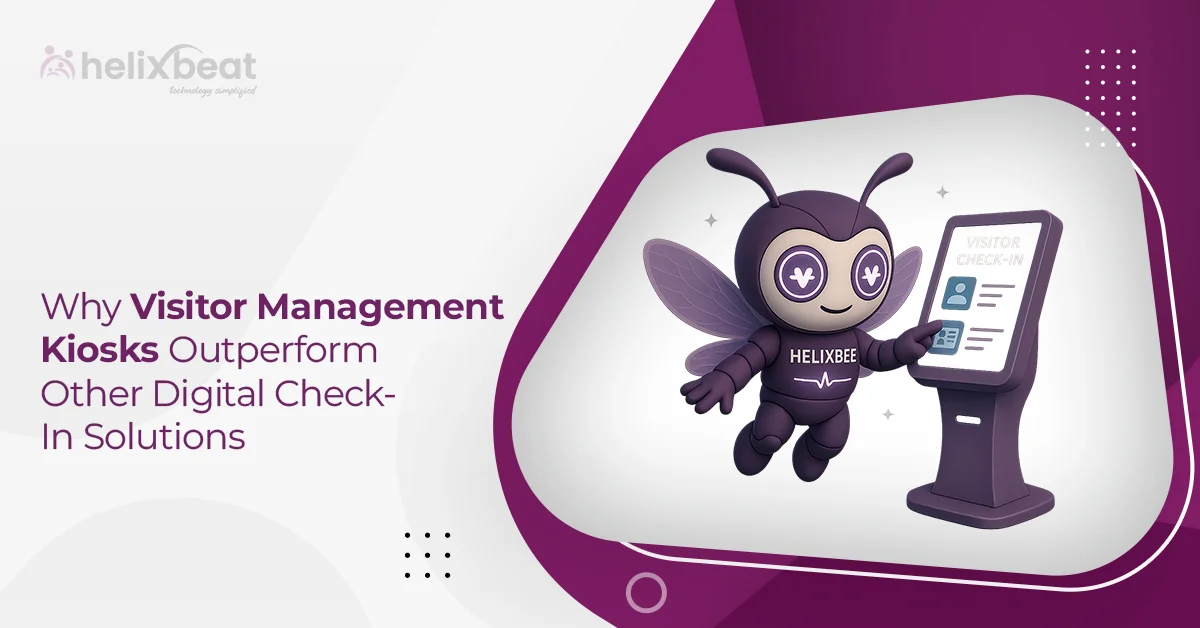Healthcare systems worldwide face increasing pressure to deliver efficient, patient-centered care while managing rising costs and complex regulations. According to a recent report by the World Health Organization, nearly 30% of healthcare costs arise from administrative inefficiencies and fragmented data management. Patient management software plays a crucial role in bridging gaps between providers, patients, and processes.
Helixbeat’s PULSE platform is one of the best patient management software solutions designed to enhance workflow efficiency, improve patient outcomes, and maintain regulatory compliance. In this blog, we’ll explore what a patient management system is, its core features, and the benefits of patient management software—plus how to choose the right PMS software tailored for your healthcare needs.

Table of Contents
What Is a Patient Management System?
A Patient Management System (PMS) is an integrated software solution designed to streamline and automate various administrative and clinical tasks in healthcare settings. It plays a crucial role in improving the efficiency and quality of patient care by centralizing all essential information in one digital platform. Instead of relying on manual systems prone to errors and inefficiencies, a PMS allows healthcare providers to access, update, and manage patient data seamlessly, ensuring better patient experiences and more effective healthcare delivery.
Here’s a more detailed breakdown of what a Patient Management System is and how it works:
1. Centralized Patient Information
A PMS consolidates all patient-related data from personal details, medical history, and ongoing treatments to appointment schedules, prescriptions, and billing information into one central system.
- This integration ensures that healthcare providers have quick and easy access to the most up-to-date information at the point of care, reducing the chances of data duplication, errors, or missed information.
- Each patient has a unique profile with all the relevant personal and medical data.
- PMS stores a complete history of the patient’s medical conditions, treatments, and medications, providing healthcare professionals with a comprehensive view for better decision-making.
- Centralized storage of patient demographics, insurance details, and contact information, improving communication and patient coordination.
2. Appointment Management and Scheduling
A significant feature of a PMS is its ability to manage appointments efficiently, reducing scheduling conflicts, missed appointments, and patient wait times. It automates reminders, allows real-time updates, and optimizes scheduling based on patient needs and provider availability.
- Patients can book, reschedule, or cancel appointments through online portals integrated with the PMS.
- To reduce no-shows, automated reminders are sent to patients via email, SMS, or push notifications.
- PMS systems help optimize resources such as consultation rooms, equipment, and personnel by providing a centralized view of availability.
3. Billing and Financial Management
A Patient Management System streamlines the billing and payment by integrating patient financial data and insurance details. It ensures that healthcare providers can efficiently process payments, manage insurance claims, and track outstanding balances.
- PMS can automatically verify insurance coverage and handle claim submissions to insurance companies, reducing administrative overhead.
- It simplifies billing by automatically generating invoices based on treatments, prescriptions, and services rendered, improving accuracy and reducing manual errors.
- PMS tracks patient payments, allowing providers to view outstanding balances, process payments, and send reminders for overdue bills.
4. Patient Communication
Effective communication between healthcare providers and patients is essential for providing high-quality care.
- A PMS enables better communication by providing tools for secure messaging, appointment reminders, and follow-up care instructions.
- Many PMS solutions include secure patient portals where patients can access their medical records, view test results, request prescriptions, and communicate directly with their healthcare team.
- Patients receive updates regarding appointment confirmations, medication refills, and other critical reminders through the PMS.
5. Integration with Electronic Health Records (EHR)
A key feature of modern Patient Management Systems is their ability to integrate seamlessly with Electronic Health Records (EHR) systems.
- EHRs store detailed patient health records that are instantly accessible across different healthcare providers, enabling more coordinated and effective care.
- With integrated EHR systems, healthcare providers can have a complete view of a patient’s medical history, lab results, diagnoses, treatment plans, and prescriptions—all in real time.
- By linking patient data, PMS helps clinicians make better-informed decisions and ensures continuity of care, especially for patients seeing multiple specialists.
- Integration with EHR reduces the need for duplicate data entry, lowering the chance of errors and improving operational efficiency.
6. Data Security and Compliance
One of the most important aspects of any healthcare software, including a Patient Management System, is ensuring data security and compliance with healthcare regulations like HIPAA (Health Insurance Portability and Accountability Act) in the United States.
- PMS solutions like PULSE use encryption techniques to ensure patient data is securely stored and transmitted.
- Only authorized personnel can access sensitive information, ensuring patient privacy.
- PMS helps healthcare organizations comply with industry regulations by providing audit trails, secure access management, and maintaining up-to-date compliance documentation.
7. Analytics and Reporting
Advanced PMS platforms provide analytics tools to generate reports on healthcare operations. This includes patient volume, treatment outcomes, revenue generation, and more. These insights help healthcare administrators and practitioners make data-driven decisions to improve operational efficiency and patient care.
- Healthcare providers can track patient progress, identify trends in health conditions, and evaluate treatment effectiveness.
- Reports on appointment scheduling, staff performance, and financials help improve the overall operational efficiency of the healthcare facility.
Looking to improve your healthcare practice with an efficient Patient Management System? [Request a demo of Helixbeat’s PULSE today!]
What Are the Struggles of the Current Healthcare System?
Here are the main hurdles:
- Fragmented and Siloed Patient Data Leading to Miscommunication
- Patient information is scattered across various departments, systems, and providers.
- Vital details like medical history or test results are not always accessible to all caregivers.
- This causes errors, repeated tests, conflicting treatments, and poor care coordination.
- Time-Consuming Manual Processes That Delay Care
- Reliance on paperwork and outdated systems slows scheduling, billing, and record-keeping.
- Administrative bottlenecks delay appointments, lab results, and insurance approvals.
- These inefficiencies lead to longer wait times and reduce healthcare staff productivity.
- Difficulties in Maintaining Patient Engagement and Follow-up
- Inconsistent communication tools make it hard to keep patients informed and involved.
- Missed appointments and poor medication adherence are common consequences.
- Patients increasingly expect personalized, convenient, and transparent communication.
- Complex Regulatory Compliance Requirements Increasing Administrative Burden
- Strict privacy laws like HIPAA demand careful handling of patient data.
- Compliance requires extensive documentation, audits, and secure processes.
- These obligations consume resources and distract from direct patient care.
- Non-compliance risks heavy fines and reputational damage.
Benefits of Patient Management Software
Implementing Patient Management Software offers several important advantages:
- Operational Efficiency
- Automates routine tasks like appointment scheduling, reminders, billing, and claims processing.
- Reduces manual errors and paperwork burden.
- Frees up staff time to focus more on patient care.
- Lowers overhead costs and optimizes resource use.
- Enhanced Patient Care
- Provides instant access to complete patient records and medical histories.
- Supports timely and well-informed clinical decisions.
- Reduces delays caused by missing or fragmented data.
- Helps improve patient outcomes and lowers readmission rates.
- Improved Patient Satisfaction
- Offers patient portals for easy access to appointments, test results, and treatment plans.
- Enables automated reminders and direct communication to reduce no-shows.
- Keeps patients engaged and informed throughout their care journey.
- Builds trust and loyalty through transparency and convenience.
- Data Security and Compliance
- Employs encryption, role-based access, and audit trails to protect sensitive data.
- Integrates privacy regulations like HIPAA and GDPR into daily workflows.
- It helps avoid costly penalties and reputational risks.
- Maintains patient confidentiality and trust.
Which Type of Patient Management Software Should You Go For?
Choosing the right Patient Management System depends on your healthcare practice’s size, needs, and budget. Here are some leading PMS options to consider, along with what makes them stand out:
- Helixbeat PULSE
It streamlines patient data management, automates appointment scheduling, handles billing and claims processing seamlessly, and provides robust analytics for informed decision-making. Its user-friendly interface and mobile accessibility make it easy for providers and staff to adapt quickly. With built-in compliance tools, Helixbeat PULSE safeguards patient data while ensuring adherence to regulations like HIPAA. Plus, it supports integration with existing EHR systems, making it a versatile solution for practices of all sizes.
Ready to elevate your practice? Request a personalized demo of Helixbeat PULSE today and learn to simplify your patient management workflow.
- Epic Systems
A widely adopted system in large hospitals and health networks, Epic offers a deep suite of EHR and patient management tools. It excels in interoperability and comprehensive patient record management but may require significant resources to implement and maintain.
- Cerner Millennium
Known for its flexibility, Cerner supports customizable workflows tailored to various specialties. It emphasizes data exchange and coordination among healthcare providers, making it suitable for integrated delivery systems.
- Athenahealth
A cloud-based solution popular with small to mid-sized practices, Athenahealth offers strong revenue cycle management and patient engagement features. Its ease of use and regular updates make it appealing for practices wanting scalable growth.
- NextGen Healthcare
Focused on ambulatory care, NextGen delivers intuitive interfaces and integrated practice management tools. It supports clinical documentation, billing, and patient communication within a single platform.
To Sum It Up
The healthcare industry is at a pivotal moment where technology like patient management software is no longer optional but essential. With growing patient expectations and regulatory complexities, adopting a comprehensive PMS like Helixbeat’s PULSE can be the difference between efficient care delivery and costly inefficiencies.
Research shows that practices using advanced PMS platforms reduce administrative time by up to 40% and improve patient satisfaction scores by 30%. For instance, a study by Kootenai Health demonstrated a 40% decrease in time spent on administrative duties and a 30% improvement in productivity following the implementation of a medical practice management system. Isn’t it time your healthcare organization harnessed these benefits?
Sign up for a free trial of Helixbeat PULSE and transform your patient management today!
FAQs
- What is the purpose of the patient management system?
To streamline patient information, appointment scheduling, billing, and communication for efficient healthcare delivery.
- What is the role of MIS in a hospital?
MIS (Management Information System) helps hospitals collect, process, and manage data to improve decision-making and operational efficiency.
- Why is patient management important?
It ensures organized care, reduces errors, enhances patient satisfaction, and improves overall healthcare quality.
- What are the roles and responsibilities of a hospital management system?
To automate administrative tasks, manage patient records, schedule appointments, handle billing, and support regulatory compliance.














